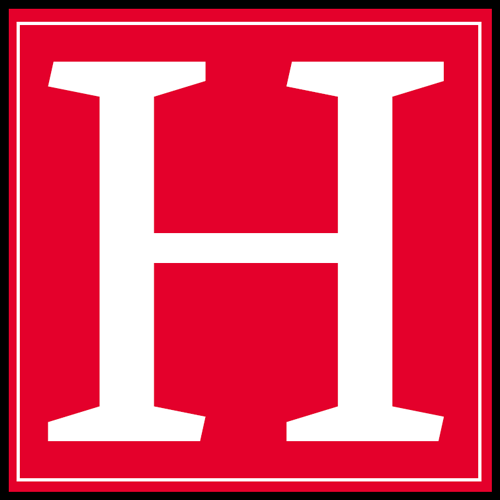The Art Lawyer’s Diary June 2020
The Hoffman Law Firm’s The Art Lawyer’s Diary by an art world insider is a guide to navigating the implications of current developments in art law as they relate to artists, collectors, galleries and museums, as well as a forum for the discussion of the implications of current events at the intersection of art, law, politics, and culture for the art world and beyond.
Witness to a Murder, a Movement, and Democracy on the Brink
This Art Lawyer’s Diary is inspired to speak out by the recent events regarding systemic racism and inequality in our country, provoked by the murder of George Floyd by police officers in Minneapolis, as well as the murders of Ahmaud Arbery, Breonna Taylor, and so many others; by the stark inequality revealed by the disproportionate number of deaths of African Americans from COVID-19, and the higher unemployment rates among African Americans.
This weekend, after the first edition of this newsletter went out on Friday, June 12, an African American man, Rayshard Brooks, was murdered, shot in the back by a policeman, having done nothing more than fallen asleep in his car in a drive-in lane at Wendy’s. As the district attorney said, there is no reason that their initial encounter – the officer’s cam-corder shows twenty-two seconds of courteous conversation – should have ended this way. This incident supports the idea that the mentality and consciousness of policing today is ill-suited to the problems we have. That this initially peaceful encounter turned violent and ended with Rayshard Brooks being shot in the back is the result of sociological and psychological factors: the stereotyping of African American men as criminals; the trauma and harm of lawlessness and systemic racism for 400 years experienced by African Americans; and in the last weeks, witnessed almost daily in the media, a law-and-order president who does not understand the absurdity and consequences of a policy to “dominate the streets with compassion,” the very notion of compassion being at odds with domination. When Colin Kaepernick took a knee to protest police brutality during the national anthem, that was compassion in action. Domination in action is the knee in the neck of George Floyd by police officer Derek Chauvin, and the shot in the back of Rayshard Brooks by police officer Garrett Rolfe. These actions are the result of the racist mindset of police who want to dominate. It is for that reason, the police’s broken mentality, that there have been calls to defund the police as it currently exists, and to substitute for systemic violence a communal mentality of compassion, empathy and love.
As Trevor Noah said, “People always say the same thing: ‘If you didn’t do that, you’d still be alive.’ They say this shit all the time. ‘If you didn’t do that.’ But the truth is, the ‘ifs’ keep on changing… There’s one common thread beyond all the ‘ifs.’ If you weren’t black, maybe you’d still be alive.”
Sheltering in place, working remotely, removed from the tragedies engulfing my hometown of New York, and at the same time intimately connected to all these events, pondering them intellectually with words rolling over in my mind, I encountered the evening news on May 25, live-streaming the capture in handcuffs, the torture, and cold-blooded murder of an African American citizen, George Floyd, who 9 minutes before had been a beautiful human being. This was not an event I regarded intellectually. It was a traumatic and emotional experience that struck my soul, as if I had been watching from only ten feet away, complicit in not offering assistance. The image of a white police officer, hands in his pockets, in broad daylight on a public street, calmly torturing and killing George Floyd, is indelibly imprinted on my soul. As one commentator remarked, we witnessed the banality of evil, sanctioned by a system that had long countenanced it.
A second terrifying image days later also struck at my very core, as a former youthful protestor in Washington DC, a former civil rights lawyer and constitutional law professor: the image of peaceful protestors in Washington DC being teargassed and pelted by rubber bullets by armed police wielding batons and shields, and attacked by mounted police, so that the President could have a photo op outside a DC church, holding a bible.
To be silent is to be complicit. We are witnessing a perfect storm, but are no longer sheltered. (Some of us never were.) This is a time to reimagine our future as Americans, going forward together to build a just and inclusive society. This newsletter is a call to action. If you find it useful as a resource, pass it on.

© Derrick Adams 2020
Derrick Adam’s illustration above was born out of a collaboration with award-winning restaurateur, philanthropist and food activist Marcus Samuelsson, who shared the image on his Instagram, writing:
The Black community is battling two pandemics right now — coronavirus and racism. My friend @derrickadamsny and I created Take 3 to act as a guide for keeping your head straight and pushing through. The steps we feel are most imperative are:
MOURN – COVID-19 has killed Black folks 3x more than anyone else. Not only that, we continue to see race related killings and unjust police brutality. What we’re going through is a travesty. It’s extremely important that you give yourself time to grieve.
REFLECT – Think about how we got here. Consider the 400+ years of injustice that lead us to this place. Lastly, think about how we all as people and as communities can create positive change for ourselves and our country.
COMPASSION – Empathy and love for all people is a must, especially during these trying times. Think about what you can do for someone else — we have to be a positive influence for our family, our neighbors, and our community.
We are watching American history right in front of our eyes. I’m so inspired by the diversity of all the peaceful protesters, the different ages, cultures, and backgrounds. It’s been incredible to watch the response on a global scale as well — thank you Stockholm, Paris, London, and others. If you can’t hit the streets, one of the most impactful things you can do is VOTE! You don’t want to be on the sidelines and tell your (future) children that you didn’t contribute. Just like Sam Cooke said, a change is gonna come. Please share this post and urge someone to Take 3 steps in order to stay well and keep going. What steps are you taking to push through during this time?

Friends have asked me to link again to my February 2018 edition of The Art Lawyer’s Diary, A Call to Action and an Opening, which was inspired by attending a screening of the film 13th by Ava DuVernay, and the opening that evening of Derrick’s exhibition Sanctuary at the Museum of Arts and Design in January 2018.
Derrick’s work always presents a positive view of Black culture – in this case, leisure travel. The exhibition is inspired by The Green Book, which Derrick discovered at the Schomburg Center: “From 1936 to 1966, Victor Hugo Green, a postal worker who worked in New Jersey and lived in Harlem, published the directories known today as the Green Book. The books listed hotels, restaurants, beauty salons, nightclubs, bars, and gas stations where Black travelers would be welcome. In an age of sundown towns, segregation, and lynching, the Green Book became an indispensable tool for safe navigation.” See History of the Green Book: Ways to Explore the Schomburg Center’s Collection of Victor Hugo Green’s Green Books.
A brilliant conversation with Pulitzer Prize -winner Isabel Wilkerson organized by MAD discussing her book, The Warmth of Other Suns: The Epic Story of America’s Great Migration, gave factual depth to the theme of Derrick’s exhibition, and is a timely read for a deeper understanding of this moment. I look with anticipation to her forthcoming book Caste: The Origins of Our Discontents, scheduled for release in August, a study of the unspoken caste system that has shaped America and shows how our lives today are still defined by a hierarchy of human divisions.
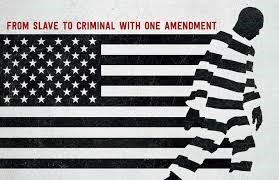
13th is Ava DuVernay’s powerful, not to be missed documentary, explaining how we got from the 13th amendment, which provides that “Neither slavery nor involuntary servitude, except as a punishment for crime whereof the party shall have been duly convicted,” to mass incarceration by way of consistently branding African American men from its enactment to the present as criminals. According to 13th, the costumes for white supremacists in D.W. Griffith’s 1915 Birth of a Nation inspired the garments of the Klu Klux Klan.
The digital release poster of Ava DuVernay’s 2016 film 13th, available on Netflix.

Also not to miss is the timely docu-drama Just Mercy about injustice in the criminal justice system and the efforts of civil rights lawyer Bryan Stevenson, founder and Executive Director of the Equal Justice Initiative in Alabama, to defend Black Americans on death row. Stars Michael B. Jordan, Jamie Foxx, and Brie Larson. Streams free during June. Link from Letty Cottin Pogrebin’s newsletter.




Law and Order is Not the Rule of Law
Our constitutional democracy is undergirded by three fundamental premises: (1) the rule of law, (2) an independent judiciary, and (3) one person, one vote. The rule of law is distinct from the concept of law and order. The rule of law is based on the tenet that no person is above the law. As DuVernay’s 13th makes clear, law and order has been a frequent rallying cry to various degrees by numerous US presidents, beginning with Richard Nixon. Bill Clinton was not immune, and our current President has taken the abuse of the former, and advocacy (“dominate the streets with compassion”) of the latter, to steroidal heights. Trump’s law and order tactics are straight from Nixon’s playbook, including his references to the “silent majority.” 13th makes clear that mass incarceration and the prison-industrial complex are a direct result of “law and order” politics, which since Nixon have focused on legislation that has the effect of incarcerating Black Americans at a much higher rate than white Americans, and destroys communities on the false premise of law and order. One can also recall Kent State and Jackson State, and the protests of May 1970.

© John Paul Filo 1970
The Lawyers’ Committee for Civil Rights Under Law is doing important work. On Monday I joined their webinar on “Police Reform Now: An Overview of New Federal Legislation to Reform and Overhaul Policing in Our Country.” The Justice in Policing Act of 2020, introduced by the Congressional Black Caucus that day, is winding its way through Congress, and our elected representatives should be encouraged to support it. Subscribe to their email list to stay up to date with their continued conversation on equal justice and the vote.
One of their most important programs, in which I have participated, is the Lawyers’ Committee’s Election Protection program, which works directly in the field to combat voter suppression at the polls. For example, to combat efforts of voter suppression by Republicans during the voting debacle in Georgia this week, the Lawyers’ Committee went to court and secured an extension of poll hours in Gwinnett County. They sent pre-litigation demand letters to officials in Cobb, DeKalb, and Fulton Counties, threatening legal action if they did not extend poll hours. The 3 counties complied, resulting in longer hours for voters. Cobb County obtained a 1 hour extension for 40 polling places, DeKalb voters got a 2 ½ hours extension, and voters in Fulton County secured a 2 hour extension.
Voting is a fundamental right, guaranteed to all by the Fourteenth and Fifteenth Amendments. Other rights also are under attack at this time. As essential as the right to vote are the rights to free speech, freedom of assembly, and free press, with their source in the First Amendment of the Constitution. In this vein of thought, I invite you to read Art Journal‘s 1991 issues Censorship I and Censorship II, which I co-edited with Robert Storr. See also the ABA Rule of Law Initiative.
Act to Support and Increase Voting, and Combat Voter Suppression
I want to bring attention to the work of my friend, entertainment lawyer Laverne Berry, former president of New York Women in Film and Television. Berry is the producer of Capturing the Flag, an award-winning documentary film about voter suppression in North Carolina. “Capturing The Flag is an urgent cautionary tale that documents what’s in store for the fast approaching election of 2020, and a close-up look of American democracy at its most vulnerable point.”
Further voting resources that Laverne has provided to me:
Two other organizations that are important in terms of both voting activism and contributions are the Florida Rights Restoration Coalition, “committed to ending the disenfranchisement and discrimination against people with convictions, mostly African Americans,” and One for Democracy, a collaboration between our country’s leading donors focused on defeating Donald Trump and strengthening our democracy.
Desmond Meade, a formerly homeless returning citizen, overcame many obstacles to become the president of the Florida Rights Restoration Coalition. Mr. Meade led FRRC to a historical victory with the successful passage of Amendment 4, a grassroots initiative which restored voting rights to 1.4 million formerly incarcerated Floridians. Amendment 4 represented the single largest expansion of voting rights in the US in half a century, and brought an end to 150 years of a Jim Crow -era law in Florida. On May 24, FRRC celebrated a historic win after U.S. District Judge Robert Hinkle ruled in favor of Florida’s returning citizen community in a far-reaching ruling that creates a pathway to voting for hundreds of thousands of Florida citizens. Judge Hinkle ruled that SB 7066, a state law requiring returning citizens to pay all restitution, fines and fees before they are eligible to vote, is unconstitutional. Hundreds of thousands of returning citizens can now get immediate relief from the court and register to vote.
It is imperative that we mobilize to vote. For New York voters – there is early voting for the ten days before both the primary and the general election. Find your polling location here from June 13 to June 23 for the primary election.
If you are sheltering in place somewhere other than your registered address as a voter, so you did not receive your absentee ballot application, you can fill out an online application to receive your ballot by mail and have your ballot sent to you wherever you are.
There is also a greater need for people to work the polls for both the primary and the general election, given that many of the retired people who often volunteer for that position are at high risk for COVID-19. If you are a low risk individual interested in that work, here is the city-wide application, and here is the state-wide application.

State of Affairs, 2020. © Chester Higgins Archives. All Rights Reserved.
My friend Chester Higgins, an award-winning New York Times photographer, shared the above image with me. He writes: “for me, [this image] illustrates the State of Affairs where too often African Americans exist behind the borders of indifference and extensive hatred. Congress needs to pass laws that take away the immunity that police have for lethal force.”
You can find Chester Higgins’ photography here.
“Omar Tate’s Honeysuckle pop-up project
is revolution in a takeout box”

Omar Tate, photograph by Clay Williams for the Inquirer.
In April’s The Art Lawyer’s Diary, I profiled Chef Omar Tate and his Honeysuckle project. This is what Chef Omar is presently up to, as recounted in an article in the Philadelphia Inquirer by Craig LaBan on June 5th.
The revolution in a takeout box that is his Honeysuckle pop-up project out of South Philly Barbacoa last week was “a onetime-only menu, a four-course homage to his grandfather imbued with pit smoke and personal history… the taste of his culinary activism couldn’t have been more timely.”
In the article, Omar is quoting as stating: “Eventually the pot boils over and that’s what we’re seeing right now. The people are speaking, proving what I’ve always said to be true: The central message permeating Honeysuckle is that our existence alongside white supremacy has always been a confrontation, whether it’s joy, pain, or we’re being murdered. And it’s coming to a head.”
Juneteenth (June 19th) is a holiday dating back to June 19, 1865, when the Emancipation Proclamation was read aloud to enslaved Black Americans in Texas. Texas was the last Confederate State to have the proclamation announced, which had come into effect on January 1, 1863. Juneteenth has been celebrated since 1866, and food has always been at the heart of Juneteenth celebrations.
Last year I celebrated Juneteenth with Omar at the James Beard House in New York, along with other noted African American chefs Adrian Lipscombe, Joi Chevalier, David Thomas, Chris Williams, Enrika Williams and Shannon Mustipher.
I have no doubt that Omar’s celebration of Juneteenth this year, while respecting social distance, will have another striking manifestation, albeit without the shared intimacy of the James Beard House celebration. You can find his website here.
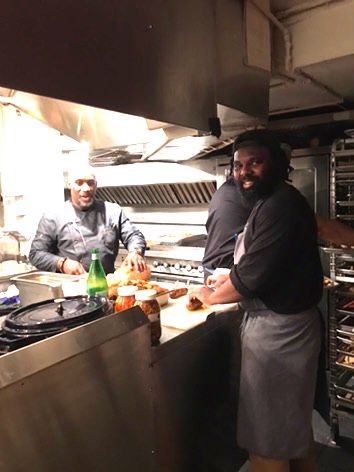
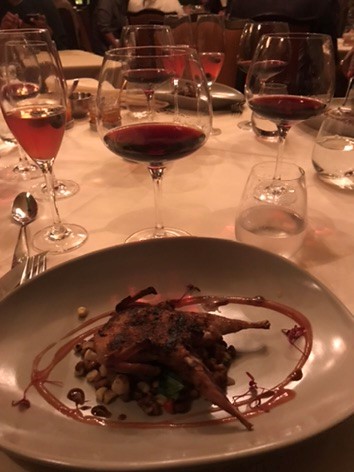
Omar Tate at the Juneteenth celebration at the James Beard House last year.
I am on the board of Performa, and urge you not to miss this Juneteenth live, Friday June 19th at 12 pm EST, an Instagram live talk between artist Sanford Biggers and chief curator RoseLee Goldberg. A screening of Biggers’ Performa 07 Commission, The Somethin’ Suite, a live performance originally presented at The Box in 2007, and one of my many favorite Performa commissions, will follow. “The Somethin’ Suite was my way of going back into history and looking at the minstrel show—America’s first form of musical theater, a truly American form of live entertainment that later appeared in films like The Birth of a Nation and The Jazz Singer, but a form based on making a mockery of African Americans.”
The Looting of SoHo and the SoHo Artist Response


An artist-activist friend shared this image with me of a Frederick Douglass quotation she painted as part of the Art 2♥SoHo project, which brought together over 100 artists last weekend and this weekend to paint the boarded-up storefronts in SoHo.
Maxi Cohen wrote of the project: “Over 100 artists showed up, from UNLOK artist Gordon Kindlon to a founder of the Guerrilla Girls to Bobbi Van sending artwork from Mexico. Painters included an 8-year-old spanning to a 78-year-old, from Egypt, Greece, China, Harlem, and Brooklyn, people of every color, artists from the neighborhood who were here since the early 70s to their children and grandchildren. People were so happy to have some relief painting and the images were all longings of the heart.”
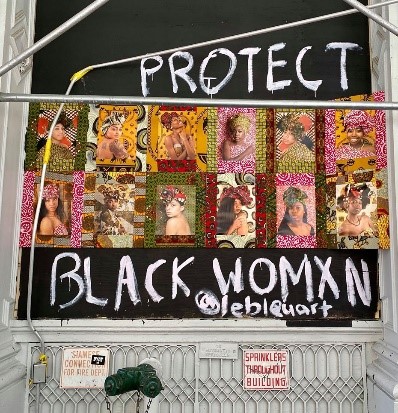
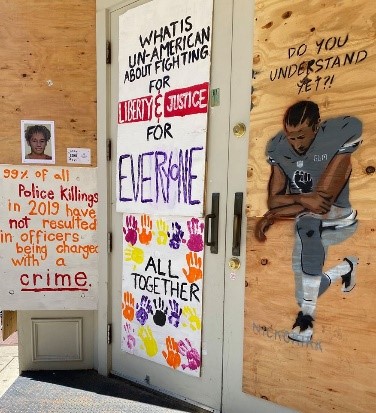
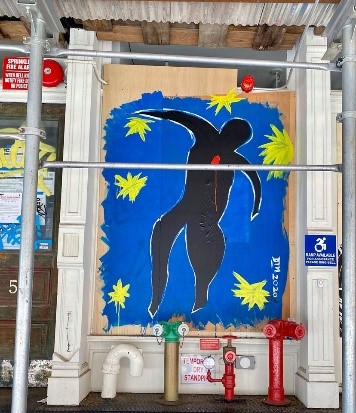
See also the work of We Make America, a group composed of activist-artists committed to making artwork, banners and signs for marches, actions, and other projects.
Tuning in to how artists are responding to this moment is a source of great inspiration. Live at Lincoln Center is doing amazing programming right now, tying present events to the history of the civil rights movement. See Freedom by Celisse, a song Celisse wrote in July 2016 following the deaths of Philando Castile and Alton Sterling, which remains a rallying cry to fight systemic injustice, and Soundtrack ’63, a live, multimedia musical performance about the African-American experience in America. See also Asia Society’s Diversity and Inclusion program. Click here to register directly.
Justice and Right Action in Field and Scientific Exploration
The morning of the same day of George Floyd’s murder, a noted African American birder, Christian Cooper, who was birding in Central Park, asked a white woman, Amy Cooper, to leash her dog. Her reaction was to call the police and tell them that “there’s an African American man threatening my life.” If Mr. Cooper hadn’t been filming the encounter, he might have been arrested. News coverage of this incident has expanded to encompass the extant conversation on birding while being Black. One resource on this topic is the book Black and Brown Faces in America’s Wild Places by Dudley Edmondson (Adventure Publications, 2006).
In the CNN article linked above, Corina Newsome, a biology graduate student at Georgia Southern University, is quoted as saying: “For far too long, Black people in the United States have been shown that outdoor exploration activities are not for us. Whether it be the way the media chooses to present who is the ‘outdoorsy’ type, or the racism Black people experience when we do explore the outdoors, as we saw recently in Central Park. Well, we’ve decided to change that narrative.” Corina Newsome, with the organization BlackAFinSTEM, founded an inaugural “Black Birders Week” as part of the effort to change that narrative.
The Instinct to Explore Belongs to No Race
“The lure of the arctic is tugging at my heart. To me the trail is calling!
The old trail, the trail that is always new.”
– Matthew Henson
I have been a member of the Explorers Club since 1985, women having only been admitted since 1982. The original founding members in 1905, were noted Arctic explorers, all white and all male.

A fellow member of the Explorers Club, my friend J.R. Harris, an African American former fortune-500 marketing executive and club member of 25 years, wrote an excellent memoir titled Way Out There: Adventures of a Wilderness Trekker, Mountaineers Books (2017). It is an account of his exploits while backpacking in some of the most rugged and remote places on earth. Prior to the pandemic, J.R. was retained as part of a U.S. Forest Service initiative, and traveled to North Carolina and Texas to interview African Americans and Hispanics about their experiences, or lack thereof, in spending time in national forests and other public lands. With this information he intends to develop a marketing and advertising plan to get more people of color, including children, into the great outdoors.
An issue of National Geographic, published in 2018, contains the headline “For Decades, Our Coverage Was Racist. To Rise Above Our Past, We Must Acknowledge It.” The editor states in her introduction to the edition: “until the 1970s, National Geographic all but ignored people of colour who lived in the United States – rarely acknowledging them beyond labourers or domestic workers – while picturing ‘natives’ elsewhere as exotics, famously and frequently unclothed, happy hunters, noble savages, every type of cliche.”

Dr. Allen Counter, a friend from the Explorers Club, was a distinguished African American explorer and a fellow of the club who passed away in 2017. He received a 2013 Lowell Thomas Award, recognizing “the principle of justice and right action in field exploration.”
It took his personal efforts to reclaim the reputation of African American explorer Matthew Henson, who reached the North Pole with Robert Peary in 1909, but received little credit until Dr. Counter dedicated his field research to gaining recognition for him. Dr. Counter’s book on Henson is North Pole Legacy: Black, White, and Eskimo (Invisible Cities Press, 1991).
Photo from Ebony Magzaine in 1947 of the explorer Matthew Henson speaking with members of the Explorers Club in conjunction with the release of his book Dark Companion in 1947.
His life is also explored in greater detail in the book The Adventure Gap by James Edward Mills, published in 2014 by the Mountaineers Books; incidentally, the same publisher as for J.R.’s memoir. See also this National Geographic article.
Dr. Counter, a professor of neurology at Harvard Medical School and inaugural director of the Harvard Foundation for Intercultural and Race Relations, successfully tracked down Henson’s descendants in Greenland, and succeeded in having Ronald Reagan authorize bringing them to New York and then to Boston to meet the Peary family. He then succeeded in having Henson’s tomb moved to Arlington National Cemetery, where he is now buried.
Dr. Counter, right, with Anaukaq, second from right, at the grave of Anaukaq’s father, Matthew A. Henson, a black explorer on Robert E. Peary’s 1909 expedition to the North Pole, at Woodlawn Cemetery in the Bronx in June 1987.
Photo by David Bookstaver, Associated Press
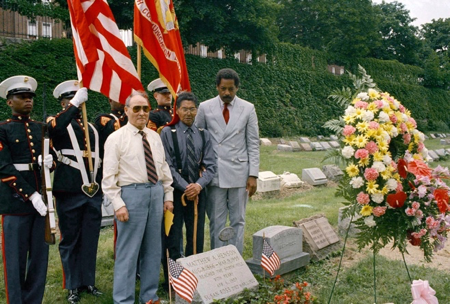


Matthew Henson’s grave in Arlington National Cemetery.
Matthew Henson was born in Maryland in 1866 to parents who were free people of color before the Civil War. He was born to explore. By some accounts, including his own, he was the first man to stand on the geographic North Pole. He and Robert Peary travelled together on seven voyages to the Arctic over a period of nearly 23 years. When they returned from their voyage to the North Pole, Peary was given the credit, and received the highest metal of the Explorers Club, the Explorers Medal, in 1914. Henson was not recognized or celebrated for decades, except in the African American community. He wrote his own account, The Negro at the North Pole published in 1912.
In 1937, he was the first African American to be made a life member of The Explorers Club, and in 1948 he was elevated to the club’s highest level of membership. In 1944, he was awarded the Peary Polar Expedition Medal, and received at the White House by Presidents Harry Truman and Dwight Eisenhower. In 2000 Henson was posthumously awarded the Hubbard Medal by the National Geographic Society, the same award which Peary had received in 1906.
As a part of the ongoing conversation about race within the scientific and academic community, I recommend reading Neil deGrasse Tyson’s recent essay, “Reflections on the Color of my Skin.” Tyson was the first African American to receive the Explorers Medal in 2015.
In a time of re-imagining our future, that re-imagining needs to include our relationship to nature. No one more eloquently advocates for this necessity by observing the behavior of animals than author and biologist Carl Safina. In his book Becoming Wild: How Animal Cultures Raise Families, Create Beauty, and Achieve Peace (Henry Holt and Co.), published in April 2020, Carl observes the behavior of sperm whales, parrots, and chimpanzees.
Carl, a MacArthur grant recipient and a neighbor from the East End, runs the Safina Center at Stony Brook University. Don’t miss the republication of his review of the relevance of Moby Dick for our times, coming out in print this Sunday in the New York Times Book Review: Melville’s Whale Was a Warning We Failed to Heed.
In the review, he writes: “Moby Dick is called a great American novel… Melville broke through American myopia… seeing civility in savages, savagery in the civilized and ruinous obedience to mad tyrants. Melville’s years on ships sowed what his biographer Newton Arvin called “a settled hatred of external authority… by the 1840s, having ventured half the world away from America, Melville cast a frigatebird-like perspective on the American character’s deepest congenital malignancy, then called Negrophobia. In the early 19th century, sperm whale hunting was never far from slave trading. Thomas Beale’s 1839 ‘The Natural History of the Sperm Whale’ included this telling dedication to the British shipowner Thomas Sturge: ‘Your character may be estimated by the incessant efforts you have made to liberate the Negro from the condition of the slave.’”

***
It is the 50th anniversary of Toni Morrison’s book The Bluest Eye, and Canios Bookstore is doing a discussion of the book over Zoom, co-sponsored by the Eastville Community Historical Society, which I have been attending and highly recommend. It is Friday, June 12 at 6 pm.
***
A Non-Exhaustive List of Resources
Organizations for Social Justice, Community Activism, Civil Rights, Police Reform:
NAACP Legal Defense and Educational Fund
American Civil Liberties Union
The Schomburg Center for Research in Black Culture
Voting Rights Organizations:
Florida Rights Restoration Coalition
Lawyers’ Committee for Civil Rights Under Law
A shoutout to my legal assistant, Hannah Story Brown, without whom this newsletter wouldn’t be possible.

